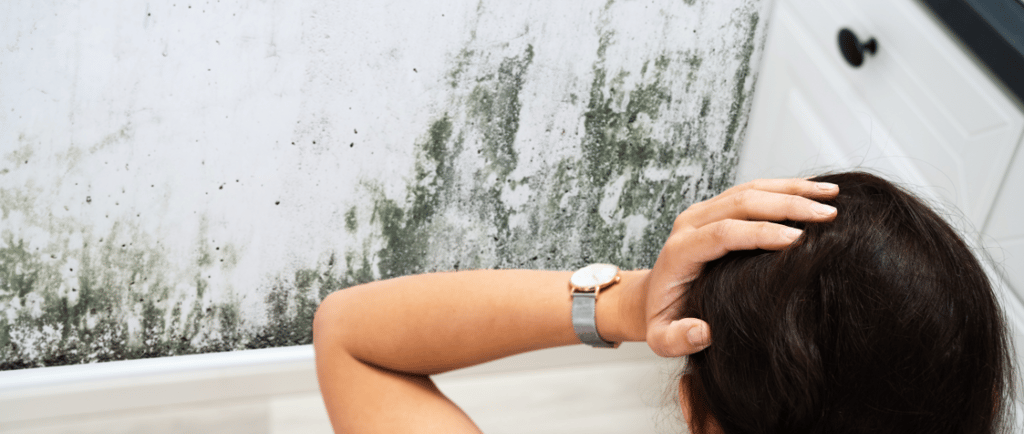Quick and Simple Methods for Cleaning Mould
Discover effective and hassle-free ways to tackle mould in your home with our comprehensive guide, "Quick and Simple Methods for Cleaning Mould." This blog post covers everything from understanding what mould is and why it's a problem to preparing for cleaning and using natural remedies. Learn about the best cleaning techniques, preventative measures, and maintenance tips to keep your home mould-free and healthy. Whether you're dealing with a small patch or a persistent issue, our friendly and conversational guide has got you covered with practical solutions and expert advice.
6/4/20243 min read


1. Introduction
Mould is an unwelcome guest in many homes, appearing uninvited and often stubbornly refusing to leave. This pervasive problem can cause significant damage to your living space and health if not addressed promptly. Fortunately, there are several quick and simple methods for cleaning mould that are both effective and easy to implement.
2. Understanding Mould
2.1 What is Mould?
Mould is a type of fungus that thrives in damp, humid environments. It spreads through spores, which are microscopic particles that can easily become airborne. These spores can land on various surfaces and grow into new mould colonies if the conditions are right.
2.2 Why is Mould a Problem?
Mould can cause a range of issues, from cosmetic damage to serious health problems. It can discolour walls, ceilings, and furniture, leading to costly repairs. More importantly, exposure to mould can trigger allergic reactions, respiratory issues, and other health complications.
3. Preparing to Clean Mould
3.1 Safety Precautions
Before diving into the cleaning process, it’s crucial to take safety measures. Mould can release harmful spores into the air, so wear protective gear such as gloves, a mask, and safety goggles. Ensure the area is well-ventilated by opening windows and doors.
3.2 Gathering Supplies
Having the right supplies on hand will make the cleaning process smoother. Common items include white vinegar, baking soda, hydrogen peroxide, tea tree oil, and commercial mould cleaners. A scrub brush, spray bottle, and microfiber cloths are also essential tools.
4. Quick Methods for Cleaning Mould
4.1 Using Vinegar
White vinegar is a natural disinfectant that can kill up to 82% of mould species. Pour undiluted vinegar into a spray bottle, apply it to the affected area, and let it sit for an hour. Afterward, wipe the surface clean with a damp cloth.
4.2 Baking Soda Solution
Baking soda is another effective mould cleaner. Mix one teaspoon of baking soda with two cups of water in a spray bottle. Shake well, spray the solution on the mouldy surface, and scrub with a brush. Rinse with water and wipe dry.
5. Simple Methods for Cleaning Mould
5.1 Hydrogen Peroxide
Hydrogen peroxide is a powerful antifungal and antiviral solution. Pour 3% hydrogen peroxide into a spray bottle and saturate the mouldy area. Let it sit for 10 minutes, then scrub and wipe the surface to remove any residual mould.
5.2 Tea Tree Oil
Tea tree oil is a natural fungicide with a pleasant aroma. Mix one teaspoon of tea tree oil with one cup of water in a spray bottle. Spray the solution on the mould, let it sit, and then wipe it off with a clean cloth.
6. Preventing Mould Growth
6.1 Controlling Humidity
Mould thrives in high humidity. Use dehumidifiers and air conditioners to maintain indoor humidity levels between 30% and 50%. This creates an inhospitable environment for mould growth.
6.2 Improving Ventilation
Proper ventilation is key to preventing mould. Ensure bathrooms, kitchens, and laundry rooms have adequate ventilation. Use exhaust fans or open windows to reduce moisture build-up.
7. Dealing with Stubborn Mould
7.1 Commercial Cleaners
For particularly stubborn mould, commercial cleaners may be necessary. These products are formulated to tackle tough mould stains and kill spores. Follow the manufacturer's instructions for the best results.
7.2 Professional Help
If mould covers a large area or keeps returning despite your efforts, it might be time to call in professionals. Mould remediation experts have the tools and knowledge to handle extensive mould problems safely and effectively.
8. Natural Remedies for Mould
8.1 Grapefruit Seed Extract
Grapefruit seed extract is a potent antifungal agent. Mix 20 drops with two cups of water in a spray bottle. Apply it to the mouldy area and leave it on. There's no need to rinse, as the solution will continue to fight mould growth.
8.2 Clove Oil
Clove oil is another natural remedy for mould. Mix half a teaspoon of clove oil with one liter of water in a spray bottle. Spray the solution on the affected area, let it sit for an hour, then wipe clean.
9. Maintaining a Mould-Free Home
9.1 Regular Cleaning
Routine cleaning is vital for keeping mould at bay. Regularly clean areas prone to moisture, such as bathrooms and kitchens, with mould-resistant products.
9.2 Spotting Early Signs
Early detection can prevent a small mould problem from becoming a major issue. Keep an eye out for discolored patches, musty odors, and damp spots. Addressing these signs promptly can save time and effort in the long run.
Mould can be a persistent and troublesome invader in your home. However, with the right methods and preventative measures, you can effectively clean mould and keep it from returning. From natural remedies to commercial cleaners, there are numerous quick and simple ways to tackle mould and ensure a healthy living environment.


(609) 806 - 5565
help@freshlivingpc.com
Follow us on
